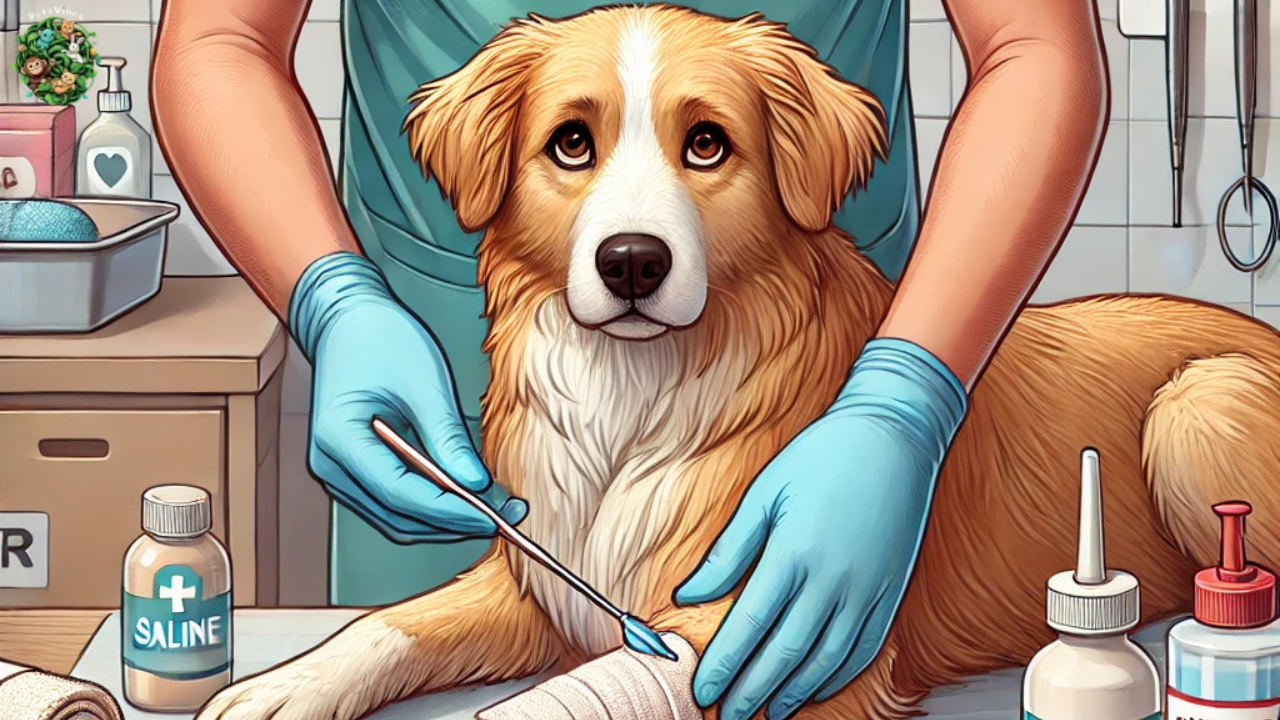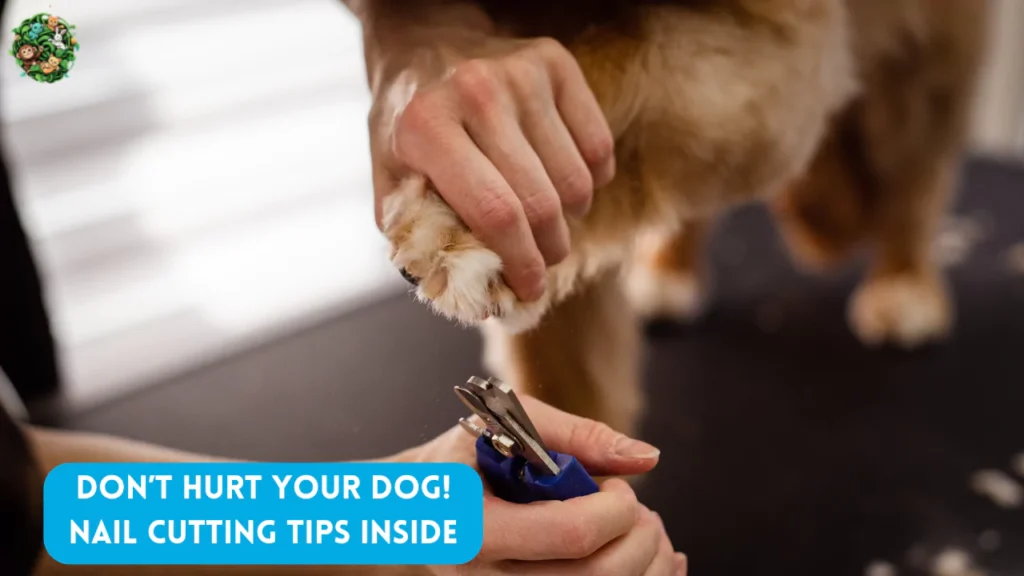Dogs are adventurous creatures, which often leads them to small injuries like cuts or scrapes. While some minor wounds can heal on their own, others may require your attention to prevent infection. Knowing how to clean a dog wound at home can be crucial for any pet parent. This guide will walk you through a detailed, step-by-step process, ensuring you’re well-equipped to care for your furry friend.
In this article, we’ll cover everything from recognizing signs of infection to the best antiseptic solutions and home remedies, answering common questions like, “Can I use hydrogen peroxide on a dog wound?” and “How to disinfect a dog wound at home?”
Why Proper Wound Care is Important for Dogs
Wound care is not just about cleaning and dressing a cut; it involves ensuring that the injury heals without complications. Dogs are prone to licking their wounds, which can introduce bacteria, leading to infections. According to veterinarians, untreated wounds can escalate into serious issues, including abscesses or systemic infections that might require antibiotics or even surgery.
Expert Insight: Dr. Emily Turner, a licensed veterinarian, emphasizes, “Prompt and proper wound care is essential. A neglected wound can turn into a severe infection within 48 hours.”
Step-by-Step Guide on How to Clean Dog Wound at Home
Step 1: Gather Necessary Supplies
Before you start, it’s essential to have the right tools to ensure you clean the wound safely and effectively. Here’s what you’ll need:
- Sterile gauze pads
- Clean towels
- Saline solution (or warm water)
- Antiseptic solution (like chlorhexidine or Betadine)
- Tweezers (if needed for debris removal)
- Gloves (to keep the area sanitary)
- Non-stick bandages
- Adhesive tape (if bandaging is necessary)
Step 2: Assess the Wound
Take a close look at the wound to understand its severity. Minor cuts or scrapes can often be treated at home, but deep wounds, punctures, or heavy bleeding may require professional help. If you notice any of the following, consult a vet immediately:
- Excessive bleeding
- Visible bone or muscle tissue
- Severe pain or swelling
- Signs of infection like pus, foul odor, or redness spreading around the wound
Step 3: Restrain Your Dog
Even the most well-behaved dog may react out of pain or fear when you attempt to clean a wound. Consider having someone assist you by holding your dog or using a muzzle if necessary. Safety is crucial to avoid any accidental bites or scratches.
Step 4: Clean the Wound
Now comes the most crucial part — cleaning the wound.
- Rinse with Saline Solution: Gently flush the wound with saline solution or lukewarm water to remove dirt, hair, or debris. Avoid using strong sprays as they can cause further damage.
- Use Antiseptic Solution: Apply a dog-safe antiseptic like chlorhexidine solution (0.05%) or diluted Betadine. Avoid using hydrogen peroxide or alcohol, as they can damage healthy tissue and slow the healing process.Can I Use Hydrogen Peroxide on Dog Wound?
No, veterinarians advise against using hydrogen peroxide on dog wounds because it can cause tissue damage and delay healing.
Step 5: Remove Debris (If Necessary)
If there are any visible pieces of dirt or foreign objects, carefully remove them with sterilized tweezers. If the debris is deeply embedded, seek veterinary assistance.
Step 6: Apply Antiseptic Ointment
After cleaning, pat the area dry with a clean towel and apply an antiseptic ointment specifically made for dogs. This will help prevent infections and speed up the healing process.
Step 7: Bandage the Wound (Optional)
If the wound is in a location where your dog can easily lick or scratch it, consider applying a non-stick bandage. Use gauze and adhesive tape to secure it. Make sure it’s snug but not too tight, as improper bandaging can restrict blood flow.
Tip: Regularly change the bandage and check for signs of infection or moisture buildup, which can promote bacterial growth.
Signs of Infection to Watch Out For
Even with the best care, sometimes infections can develop. Keep an eye out for the following symptoms:
- Swelling or redness around the wound
- A foul smell or discharge
- Heat emanating from the affected area
- Your dog excessively licking or biting the wound
- Loss of appetite or lethargy
If you notice any of these signs, consult your vet immediately.
FAQs
1. Can I Use Human Wound Cleaners on My Dog?
It’s not advisable to use products designed for humans on dogs, as their skin and healing processes differ. Always opt for pet-safe antiseptics.
2. How Often Should I Clean My Dog’s Wound?
For minor wounds, clean once daily until healed. For more severe wounds, your vet may advise more frequent cleaning and monitoring.
3. What Are Some Home Remedies for Dog Wound Care?
While over-the-counter antiseptics are best, some natural remedies can help minor wounds:
- Coconut oil: Known for its antimicrobial properties.
- Aloe vera gel: Provides soothing relief and helps reduce inflammation.
- Chamomile tea: Used to gently clean wounds due to its anti-inflammatory properties.
Always consult with a vet before trying home remedies to ensure they’re safe for your pet.
Common Mistakes to Avoid When Cleaning Dog Wounds
- Using harsh chemicals like alcohol or hydrogen peroxide
- Ignoring signs of infection
- Over-cleaning, which can irritate the wound
- Leaving a wound exposed without monitoring it
When to See a Vet for Dog Wound
Sometimes, wounds may not heal properly despite your best efforts. Here’s when to seek veterinary attention:
- If the wound doesn’t show signs of healing after a few days
- Excessive swelling or pus discharge
- Your dog appears to be in pain, limping, or has a fever
- The wound has a foul odor or unusual coloration
Final Thoughts: Keeping Your Dog Safe
Accidents happen, but being prepared to handle minor injuries at home can save your pet from discomfort and potential infections. Remember, cleaning a dog wound at home is a skill every pet owner should master, but it’s equally important to know your limits. For severe wounds or infections, always seek veterinary care.
By following the steps outlined in this guide, you’ll be able to provide effective wound care and help your furry friend get back on their paws faster!











